#Hans Pleydenwurff
Text

Hans Pleydenwurff, diptych of the Bamberg canon and subdeacon Georg Graf von Löwenstein, Nuremberg, around 1456 - Detail
120 notes
·
View notes
Text
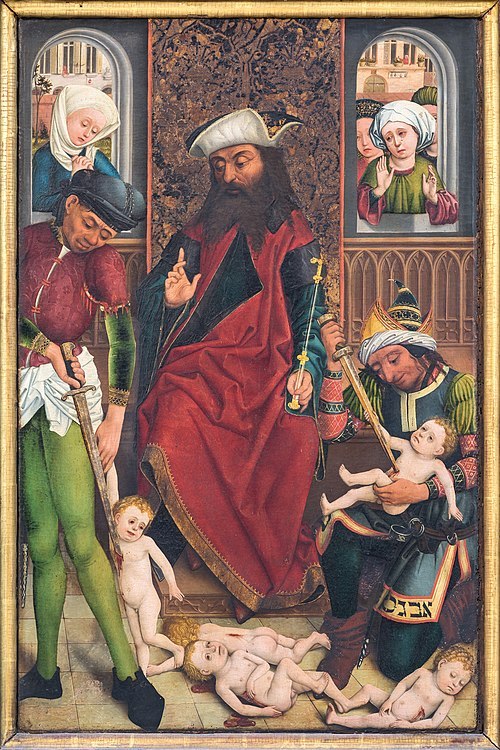
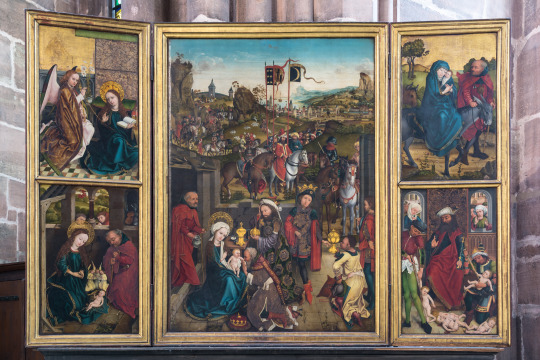
Massacre of the Innocents, Hans Pleydenwurff (1420–1472)
11 notes
·
View notes
Photo
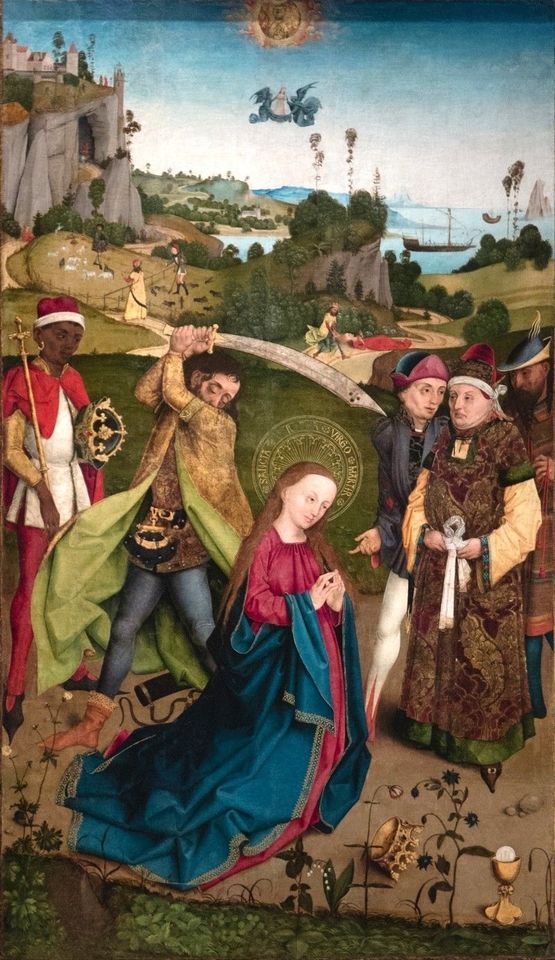
Hans Pleydenwurff
Beheading of St Barbara
ca. 1470
137 notes
·
View notes
Photo
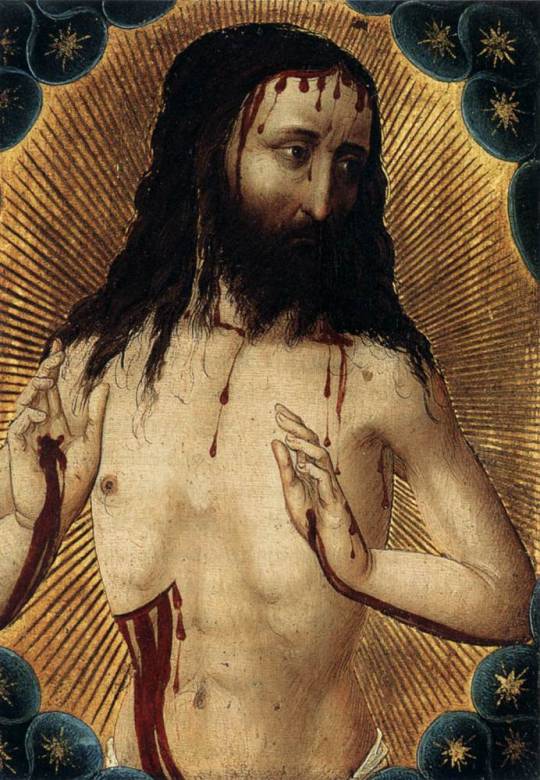
1.
Hans Pleydenwurff
Man of Sorrows
1457, distemper on wood, Germanisches Nationalmuseum, Nuremberg
83 notes
·
View notes
Photo

Crucifixion of the Hof Altarpiece
Hans Pleydenwurff, 1465
49 notes
·
View notes
Photo

The Man of Sorrows, 1456, by Hans Pleydenwurff (1420-1472)
#art#art history#The Man of Sorrows#1400's#15th century#Hans Pleydenwurff#art history blog#artwork#painting#religious
222 notes
·
View notes
Photo
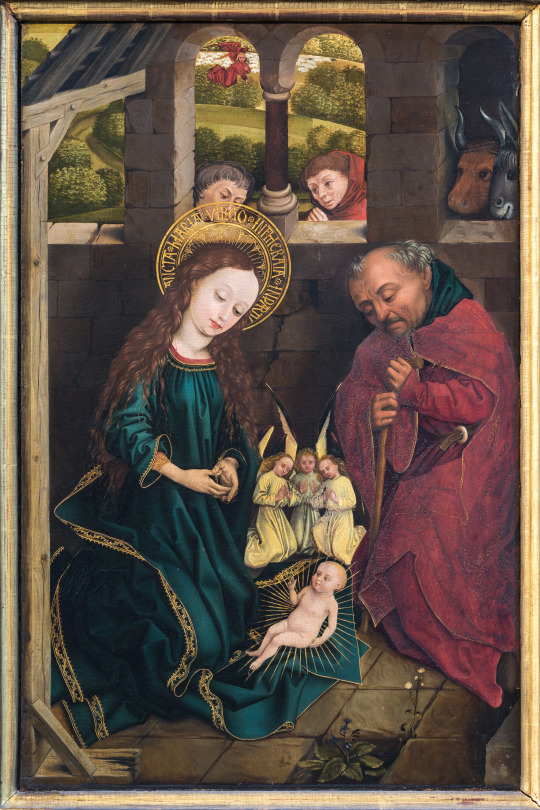
Picture of the day: Nativity of Jesus by Hans Pleydenwurff, around 1460. Panel painting at the Altar of the Magi (Dreikönigsaltar) in St. Lorenz Church Nuremberg, Bavaria, Germany. https://t.co/9S9JTOjsW2
#Picture of the day: Nativity of Jesus by Hans Pleydenwurff#around 1460. Panel painting at the Altar
0 notes
Text
Michael Wolgemut
Michael Wolgemut (* 1434 in Nürnberg; † 30. November 1519 ebenda; auch Michael Wohlgemut oder Michael Wohlgemuth) war ein Maler und ein Meister des Holzschnitts. Er war Schüler von Hans Pleydenwurff und der wichtigste Vertreter der älteren fränkischen Schule.
Auch arbeitete er im Auftrage des sächsischen Kurfürsten Friedrichs des Weisen bei der Ausgestaltung seines Schlosses in Wittenberg mit. Durch Kriegseinwirkungen ist sein Schaffenswerk in Wittenberg verlorengegangen. So auch ein Bildnis seines Auftraggebers, des Kurfürsten Friedrich des Weisen.
Leben und Schaffen
Wolgemut wurde 1434 in Nürnberg geboren, scheint sich in Flandern oder doch nach flandrischen Gemälden gebildet zu haben und gründete in Nürnberg, wo er zuerst 1473 urkundlich erwähnt wird, eine einflussreiche, vielbeschäftigte Malerwerkstätte, in die auch Albrecht Dürer Ende 1486 eintrat. Man kann davon ausgehen, dass Wolgemut, der die Witwe Hans Pleydenwurffs, vermutlich sein früherer Arbeitgeber, heiratete, dessen Werkstatt übernahm. Die Weltchronik-Illustration ist ein gemeinsames Werk Wolgemuts und seines Stiefsohns Wilhelm Pleydenwurff.
Tafelmalerei
Aus Wolgemuts Atelier ging eine große Zahl von Schnitzaltären mit bemalten Flügeln hervor, welche zumeist handwerksmäßig mit Hilfe von Gesellen ausgeführt sind. Die hervorragendsten sind vier Flügel mit Darstellungen aus der Geschichte Christi von 1465 (in der Münchener Pinakothek), der Altar der Marienkirche zu Zwickau mit Szenen aus der Jugend und der Passion Christi und der Peringsdörfer-Altar (heute in der Friedenskirche, Nürnberg) mit acht männlichen und weiblichen Heiligen und Szenen aus der Legende des heiligen Veit. Möglicherweise ist der Peringsdörfer-Altar auch das Werk eines unbekannten Meisters. Ein weiterer Hochaltar aus Wolgemuts Werkstatt befindet sich in der „Stadtkirche Schwabach St. Johannes des Täufers und St. Martin“ in Schwabach.
Sein Hauptwerk sind die Gemälde in der Ratsstube zu Goslar, Szenen aus der Kindheit Christi an der Decke und Gestalten von Kaisern und Sibyllen an den Wänden. Diese können aber möglicherweise auch aus der Werkstatt des unbekannten Meisters der Goslarer Sibyllen stammen. Wolgemut hat auch Bildnisse gemalt. In seinen besseren, von ihm eigenhändig ausgeführten Gemälden erscheint er als ein den flandrischen Malern sowohl in der Feinheit der Ausführung als der Empfindung nachstehender Künstler; die Formen pflegen eckig zu sein, die Typen ziemlich einförmig und bisweilen von übertriebener Hässlichkeit.
Druckgrafik
Wolgemut zeichnete auch Vorlagen für Holzschnitte, unter anderem für die Illustrationen im Schatzbehalter (Nürnberg 1491) von Stephan Fridolin und 1.809 Holzschnitte für die Weltchronik (Nürnberg 1493) von Hartmann Schedel, die den Anstoß zur raschen Fortentwickelung dieser Kunst durch und unter Albrecht Dürer gaben. In der Schedel’schen Weltchronik wird ihm u.a. die doppelseitige Ansicht von Nürnberg, zugeschrieben, die erste gedruckte Ansicht ihrer Art überhaupt.
Dagegen hat Wolgemut keine Kupferstiche geschaffen.
Familie
Michael Wolgemut ist der Sohn von Valentin Wolgemut († 1469) und dessen Frau Anna († um 1495). Sein Vater war Maler und war vermutlich Lehrer seines Sohnes. 1473 heiratete er Barbara Pleydenwurff, Witwe des Malers Hans Pleydenwurff. Es wird vermutet, dass er der Geselle war. Nach dem Tod seiner ersten Frau heiratete er eine Christine († 1550).
Mit einem Wilhelm Pleydenwurff, vermutlich der Sohn von Hans, arbeitete er an der Schedel’schen Weltchronik.

Michael Wolgemut: Albrecht Dürer´s Porträt
5 notes
·
View notes
Photo
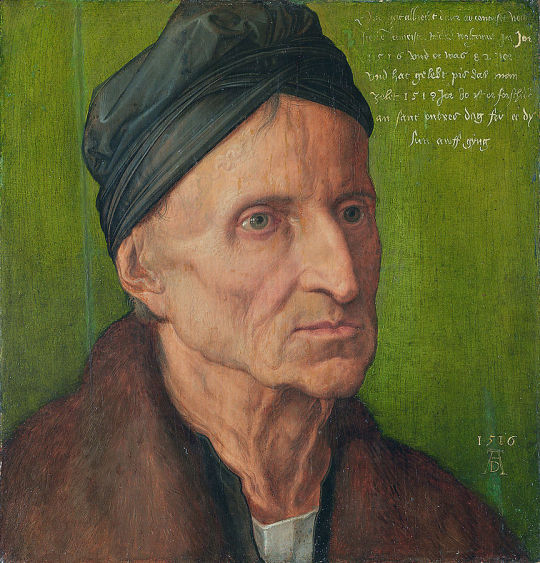
Albrecht Dürer - Portrait of Michael Wolgemut - 1516
Albrecht Dürer (21 May 1471 – 6 April 1528),[4] sometimes spelt in English as Durer or Duerer, without umlaut, was a German painter, printmaker, and theorist of the German Renaissance. Born in Nuremberg, Dürer established his reputation and influence across Europe when he was in his twenties due to his high-quality woodcut prints. He was in communication with the major Italian artists of his time, including Raphael, Giovanni Bellini and Leonardo da Vinci, and from 1512 he was patronized by Emperor Maximilian I. Dürer is commemorated by both the Lutheran and Episcopal Churches.
Dürer's vast body of work includes engravings, his preferred technique in his later prints, altarpieces, portraits and self-portraits, watercolours and books. The woodcuts, such as the Apocalypse series (1498), are more Gothic than the rest of his work. His well-known engravings include the Knight, Death and the Devil (1513), Saint Jerome in his Study (1514) and Melencolia I (1514), which has been the subject of extensive analysis and interpretation. His watercolours also mark him as one of the first European landscape artists, while his ambitious woodcuts revolutionized the potential of that medium.
Dürer's introduction of classical motifs into Northern art, through his knowledge of Italian artists and German humanists, has secured his reputation as one of the most important figures of the Northern Renaissance. This is reinforced by his theoretical treatises, which involve principles of mathematics, perspective, and ideal proportions.
Dürer has been credited with inventing the basic principle of ray tracing, a technique used in modern computer graphics.
Michael Wolgemut (formerly spelt Wohlgemuth; 1434 – 30 November 1519) was a German painter and printmaker, who ran a workshop in Nuremberg. He is best known as having taught the young Albrecht Dürer.
The importance of Wolgemut as an artist rests not only on his own individual works, but also on the fact that he was the head of a large workshop, in which many different branches of the fine arts were carried on by a great number of pupil-assistants, including Albrecht Dürer, who completed an apprenticeship with him between 1486-9. In his atelier large altar-pieces and other sacred paintings were executed, and also elaborate carved painted wood retables, consisting of crowded subjects in high relief, richly decorated with gold and colour.
Wolgemut trained with his father Valentin Wolgemut (who died in 1469 or 1470) and is thought to have been an assistant to Hans Pleydenwurff in Nuremberg. He worked with Gabriel Malesskircher in Munich early in 1471, leaving the city after unsuccessfully suing Malesskircher's daughter for breach of contract, claiming she had broken off their engagement. He then returned to his late father's workshop in Nuremberg, which his mother had maintained since Valentin's death.
In 1472 he married Pleydenwurff's widow and took over his workshop; her son Wilhelm Pleydenwurff worked as an assistant, and from 1491 a partner, to Wolgemut. Some consider Wilhelm a finer artist than Wolgemut, however he died in January 1494, when he was probably still in his thirties. Wilhelm's oeuvre remains unclear, though works in various media have been attributed to him.
25 notes
·
View notes
Photo
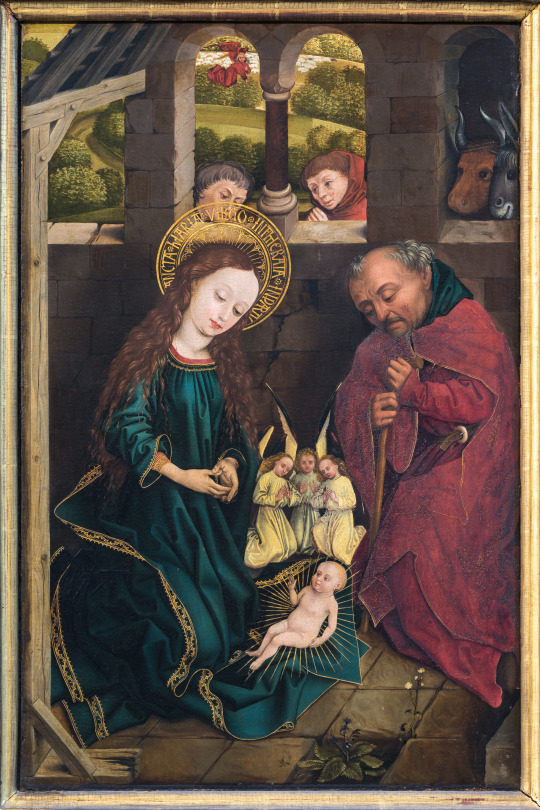
Wikipedia picture of the day on December 25, 2020:
Nativity of Jesus by Hans Pleydenwurff, around 1460. Panel painting at the Altar of the Magi (Dreikönigsaltar) in St. Lorenz Church Nuremberg, Bavaria, Germany.
Learn more.
2 notes
·
View notes
Photo
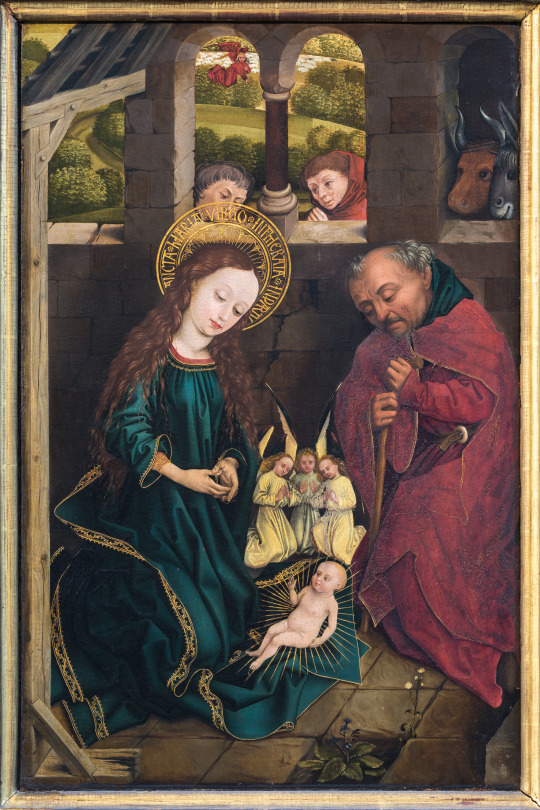
Wikipedia picture of the day on December 25, 2020:
Nativity of Jesus by Hans Pleydenwurff, around 1460. Panel painting at the Altar of the Magi (Dreikönigsaltar) in St. Lorenz Church Nuremberg, Bavaria, Germany.
Learn more.
1 note
·
View note
Photo
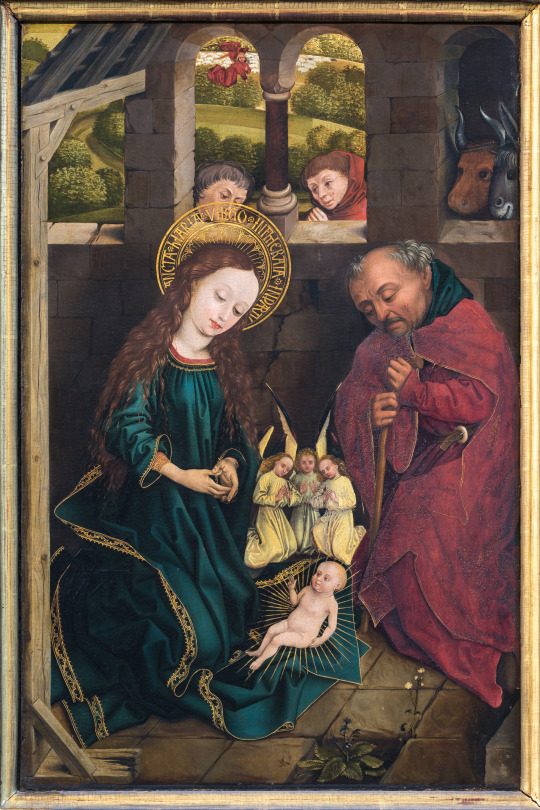
Wikipedia picture of the day on December 25, 2020:
Nativity of Jesus by Hans Pleydenwurff, around 1460. Panel painting at the Altar of the Magi (Dreikönigsaltar) in St. Lorenz Church Nuremberg, Bavaria, Germany.
Learn more.
1 note
·
View note
Photo
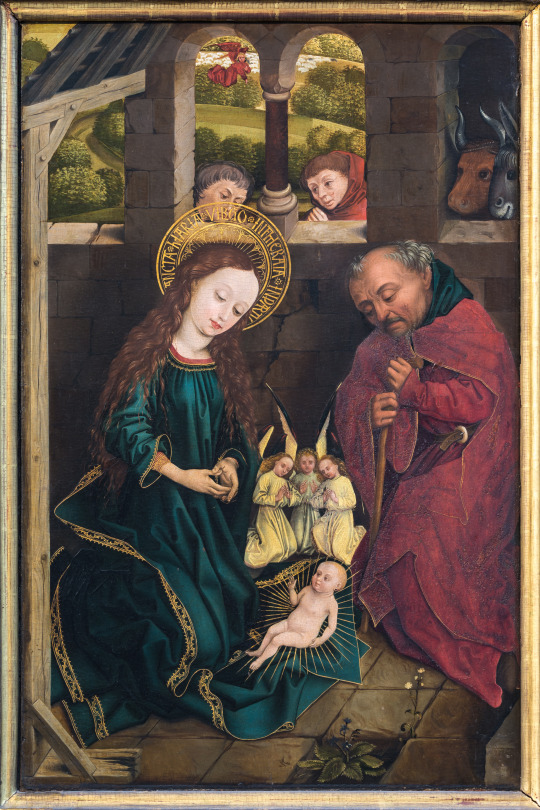
Wikipedia picture of the day on December 25, 2020:
Nativity of Jesus by Hans Pleydenwurff, around 1460. Panel painting at the Altar of the Magi (Dreikönigsaltar) in St. Lorenz Church Nuremberg, Bavaria, Germany.
Learn more.
1 note
·
View note
Photo
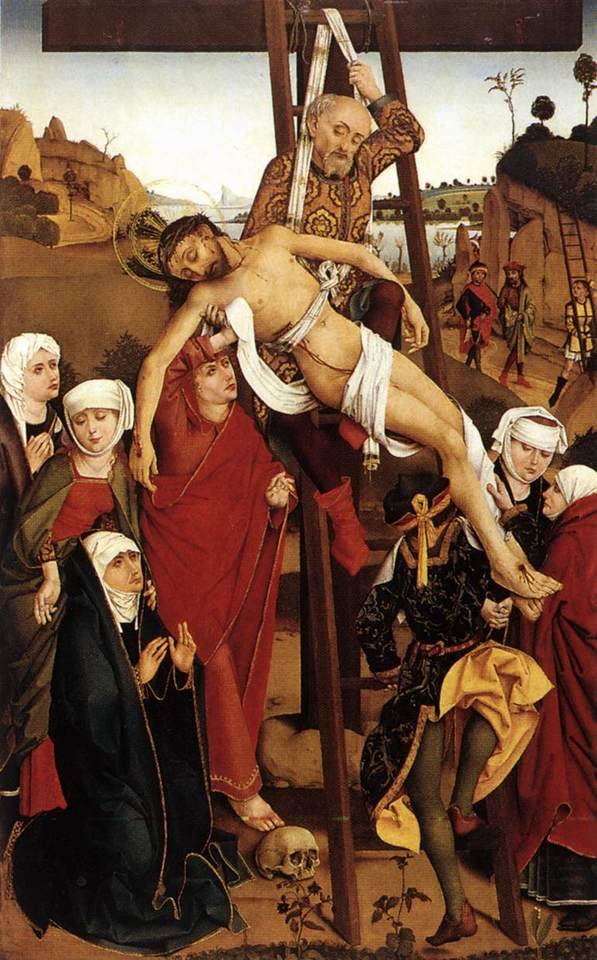
3.
Hans Pleydenwurff
Crucifixion of the Hof Altarpiece
1465, mixed technique on pine panel, Alte Pinakothek, Munich
27 notes
·
View notes
Photo
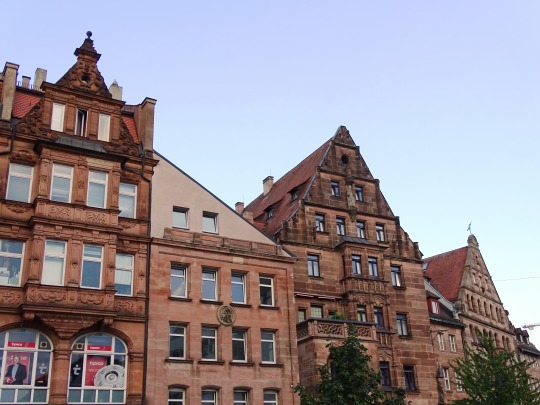
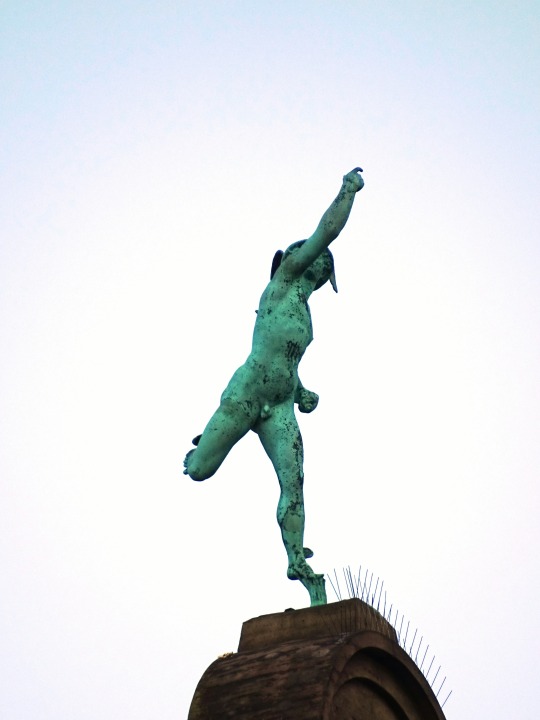

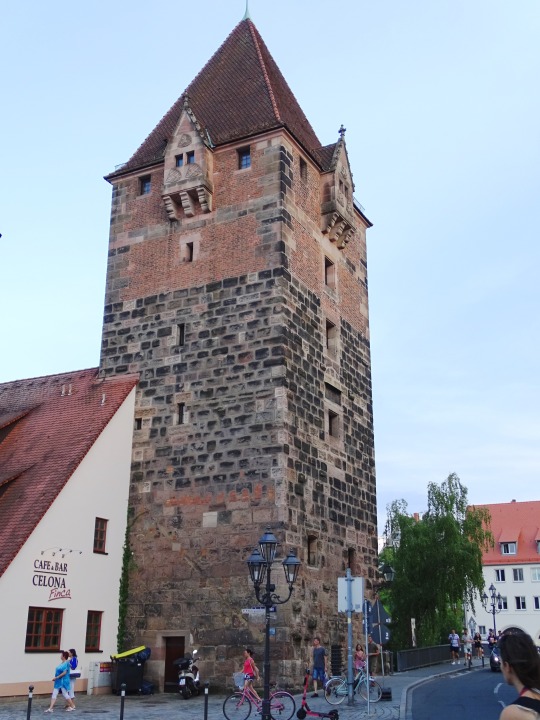
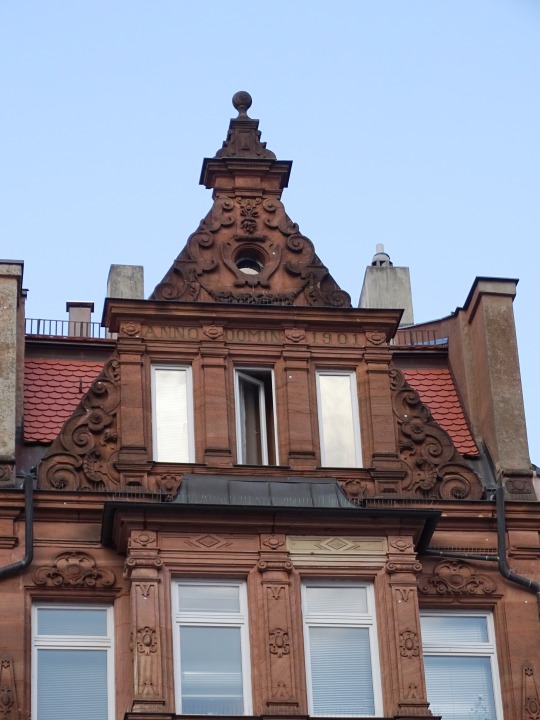

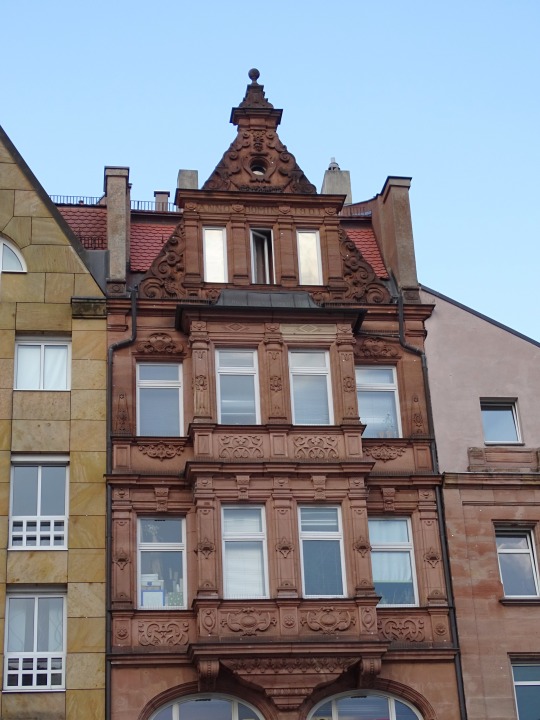
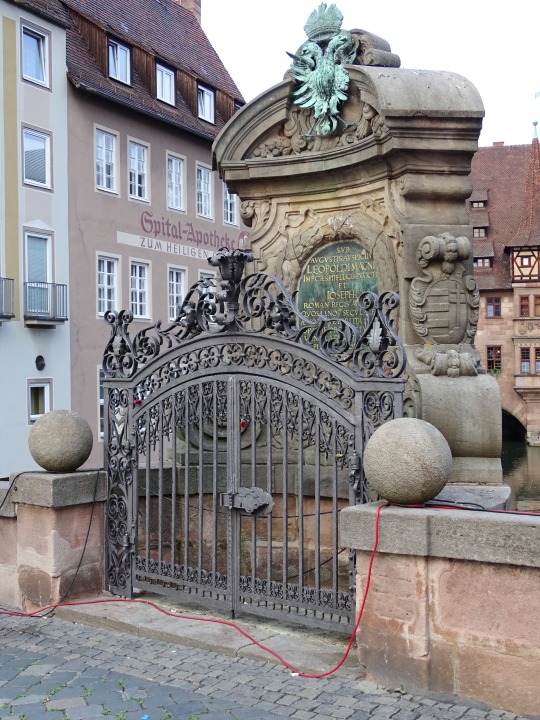
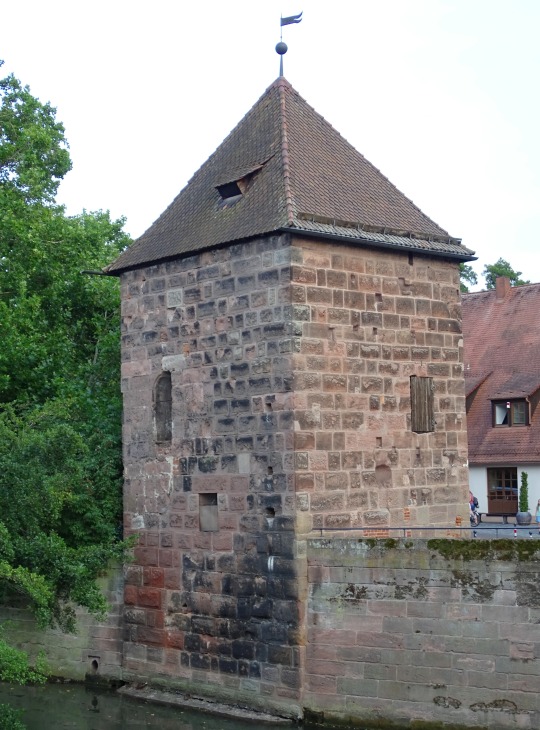
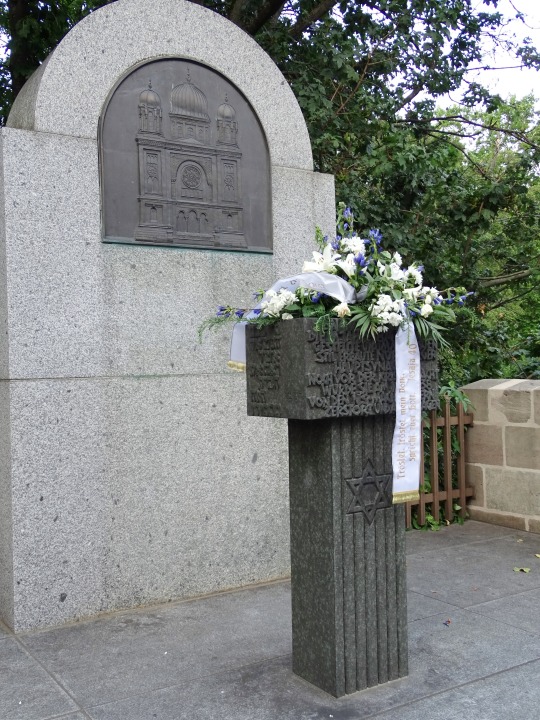
Nuremberg (No. 6)
Nuremberg was an early centre of humanism, science, printing, and mechanical invention. The city contributed much to the science of astronomy. In 1471 Johannes Mueller of Königsberg (Bavaria), later called Regiomontanus, built an astronomical observatory in Nuremberg and published many important astronomical charts.
In 1515, Albrecht Dürer, a native of Nuremberg, created woodcuts of the first maps of the stars of the northern and southern hemispheres, producing the first printed star charts, which had been ordered by Johannes Stabius. Around 1515 Dürer also published the "Stabiussche Weltkarte", the first perspective drawing of the terrestrial globe.
Printers and publishers have a long history in Nuremberg. Many of these publishers worked with well-known artists of the day to produce books that could also be considered works of art. In 1470 Anton Koberger opened Europe's first print shop in Nuremberg. In 1493, he published the Nuremberg Chronicles, also known as the World Chronicles (Schedelsche Weltchronik), an illustrated history of the world from the creation to the present day. It was written in the local Franconian dialect by Hartmann Schedel and had illustrations by Michael Wohlgemuth, Wilhelm Pleydenwurff, and Albrecht Dürer. Others furthered geographical knowledge and travel by map making. Notable among these was navigator and geographer Martin Behaim, who made the first world globe.
Sculptors such as Veit Stoss, Adam Kraft and Peter Vischer are also associated with Nuremberg.
Composed of prosperous artisans, the guilds of the Meistersingers flourished here. Richard Wagner made their most famous member, Hans Sachs, the hero of his opera Die Meistersinger von Nürnberg. Baroque composer Johann Pachelbel was born here and was organist of St. Sebaldus Church.
The academy of fine arts situated in Nuremberg is the oldest art academy in central Europe and looks back to a tradition of 350 years of artistic education.
Nuremberg is also famous for its Christkindlesmarkt (Christmas market), which draws well over a million shoppers each year. The market is famous for its handmade ornaments and delicacies.
Source: WIkipedia
#Synagogendenkmal#Mauerturm#Nuremberg#Nürnberg#Germany#travel#Deutschland#Bavaria#Bayern#summer 2020#original photography#vacation#architecture#façade#cityscape#tourist attraction#landmark#old town#Schuldturm#tower#city wall#exterior#memorial#wreath
1 note
·
View note
Photo
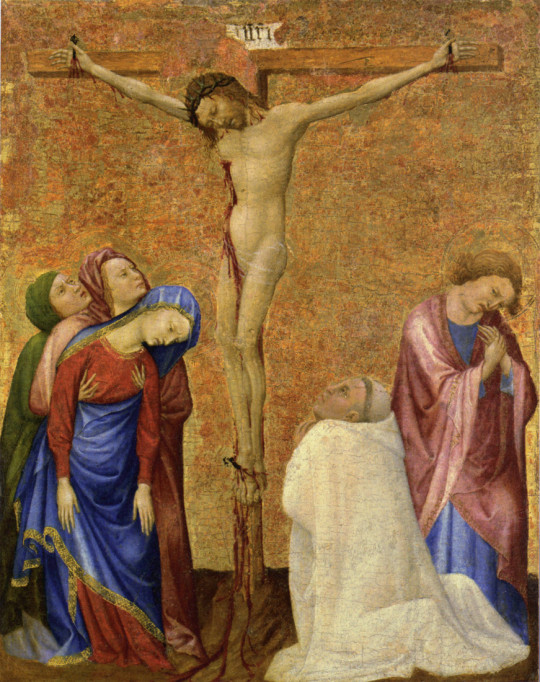

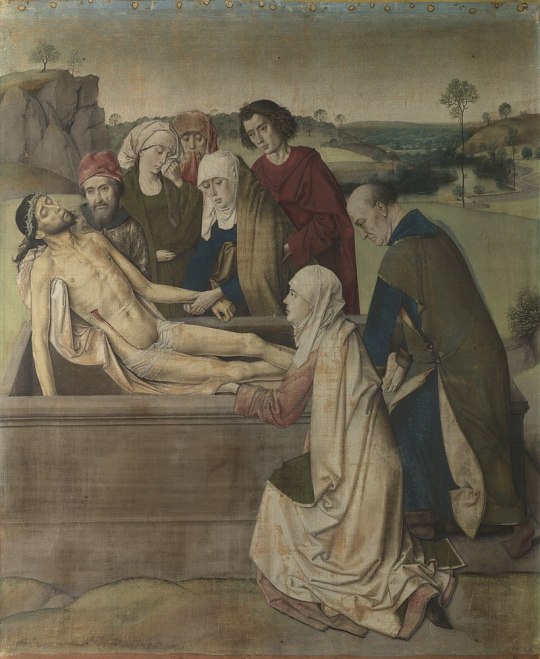
1. Jean de Beaumetz, Crucifixion, 1390-1395. Source.
2. Hans Pleydenwurff, Deposition, 1465. Source.
3. Dieric Bouts, Entombment, 1440-1455. Source.
Thus once again, in this most popular Renaissance reading, the genuineness of the Incarnation is put to proof in the sexual member. More than that: the wounding of it [in its circumcision] initiates the salvation of mankind, for the archbishop [Jacopo da Voraigne, compiler of the Golden Legend] says further: ‘On this day he began to shed his blood for us . . . and this was the beginning of our redemption.’ Then, after citing three subsequent effusions of the precious blood (at the Agony in the Garden, the Flagellation, and the Nailing to the Cross), Voraigne comes to the fifth and last shedding - ‘when his side was opened and this was the sacrament of our redemption, for then out of his side issued blood and water’ - the blood and water which, in Augustine’s wording, ‘we know to be the sacraments from which the Church is built up.’ In Voraigne’s formulation, the first and last wounds received are not yet placed in immediate apposition, but they appear as the terminal points of an ordained cycle. Linking beginning to end, the knife’s cut to the gash of the lance, we trace a passage on the body of Christ from man to God; the sexual member broaching the mortal Passion, the breast yielding the gift of grace. Put into words, the anatomical consequence of Voraigne’s formula comes as a shock - that Christ’s redemptive Passion, which culminates on the cross in the blood of the sacred heart, begins in the blood of the penis.
[...] The coupling of Christ’s first and last wounds -a verbal figure to bridge a lifespan of three decades- becomes topical in 15th and 16th century Passion pictures that guide the trickle of gore from the breast back to the groin: a blood hyphen between commencement and consummation. [...] The newborn savior, nesting omnipotence in the condition of vulnerability, surrenders to his first stigma the life-giving organ. Eight days old, the manful God lives in the instantaneity of beginning and end, hosts a yet distant death and overleaps the time lapse while submitting to time’s regiment. This is more than a case of divine prescience. As in the prolepses of Renaissance painting, as in the ‘incarnational theology’ of the preachers, Christ’s death is conceived as wholly infolded in his miracle birth. Not that the Passion and Resurrection are denied their necessity, but they are regarded -and I am quoting O’Malley- as ‘articulations of what was already inchoately accomplished’ in the Incarnation. And this must be why we find Renaissance preachers contemplating the redemptive work of God’s infant body much as Renaissance painters did, that is to say, with the same dismissal of squeamishness, the same enthusiasm, the same sense of fulfillment.
- Leo Steinberg (The Sexuality of Christ in Renaissance Art and in Modern Oblivion, pages 58, 61). Emphasis mine.
#Jesus Christ#Christianity#Incarnation#Renaissance#art#circumcision#Crucifixion#Precious Blood#Holy Wounds#The Sexuality of Christ
10 notes
·
View notes